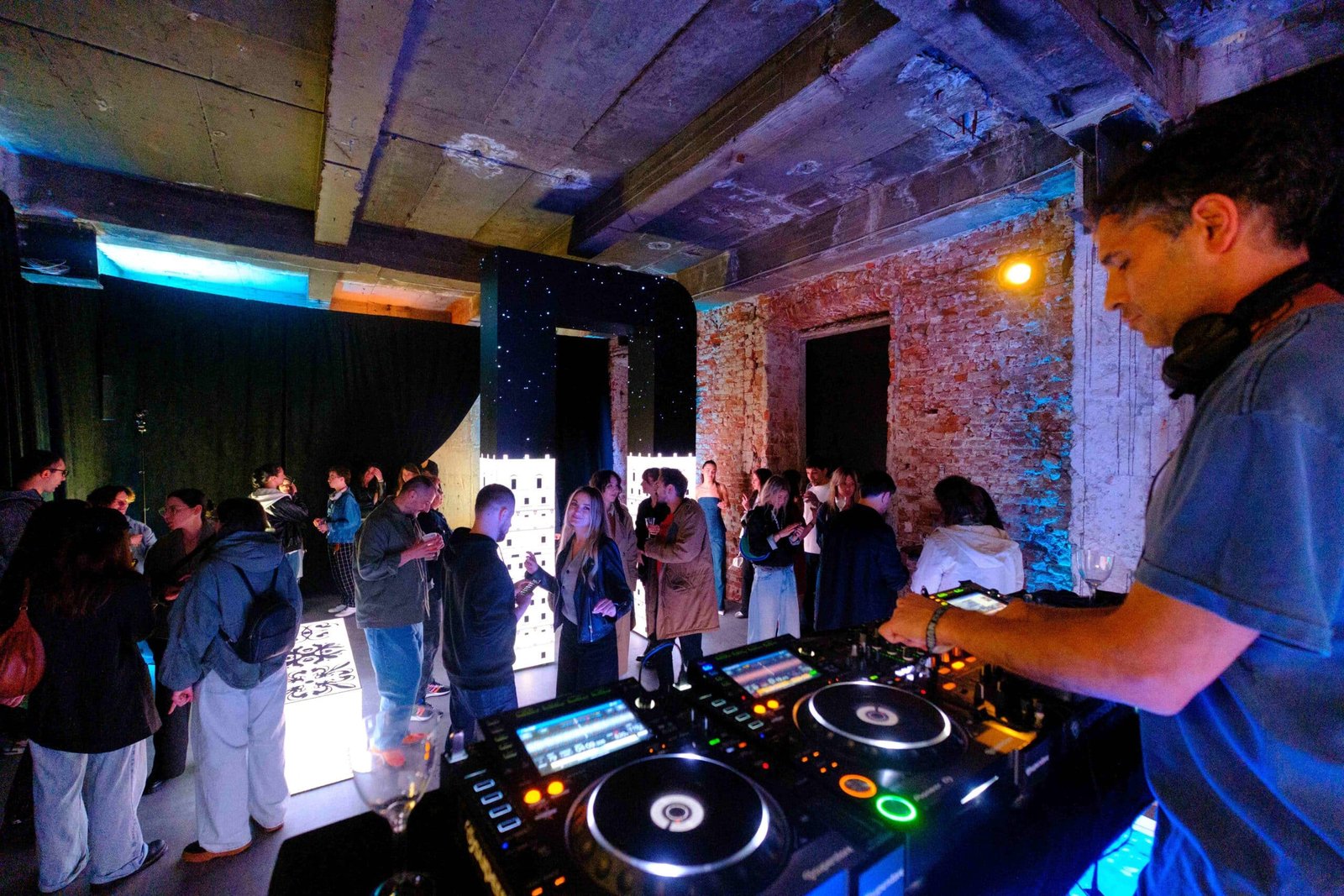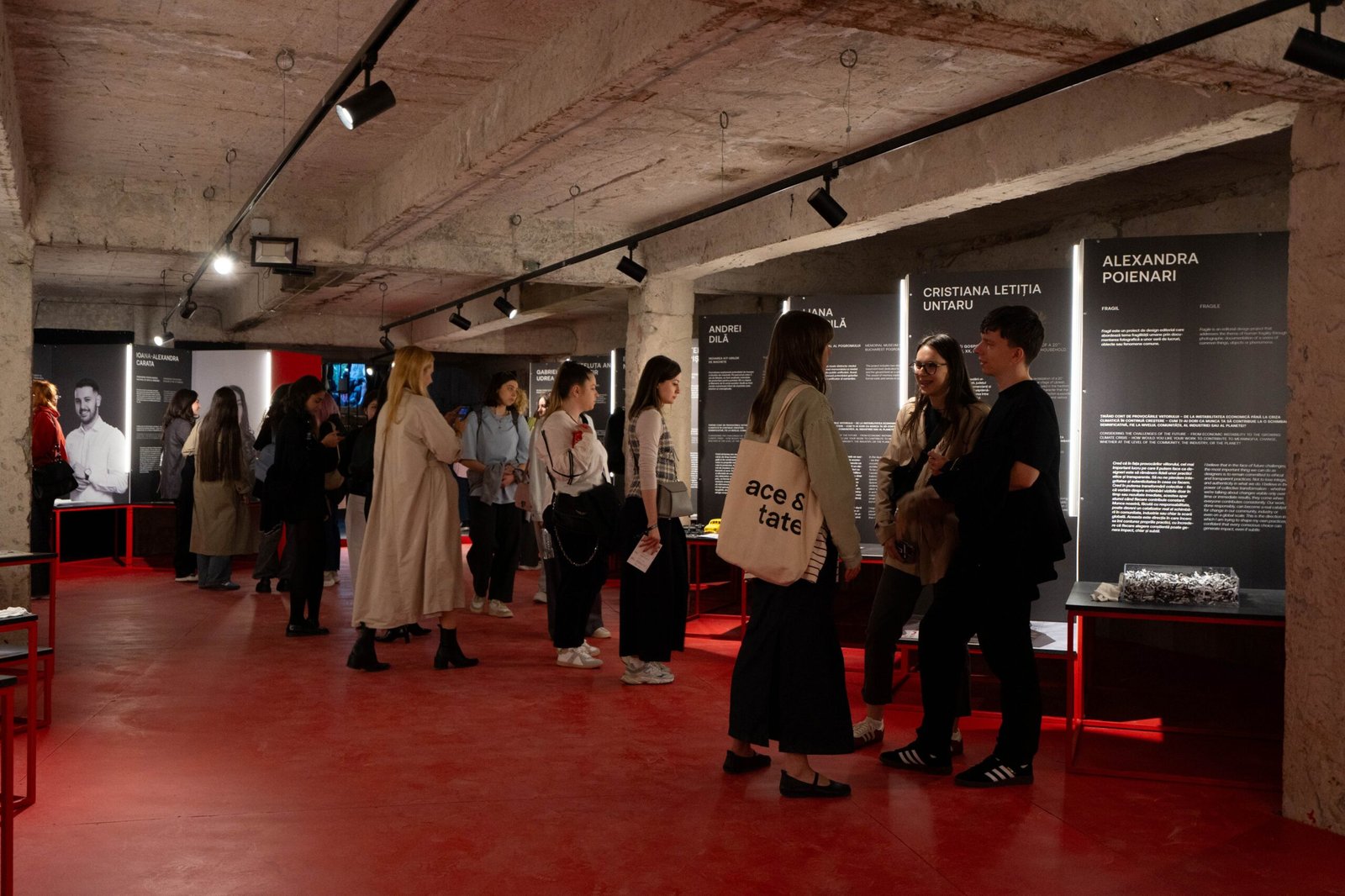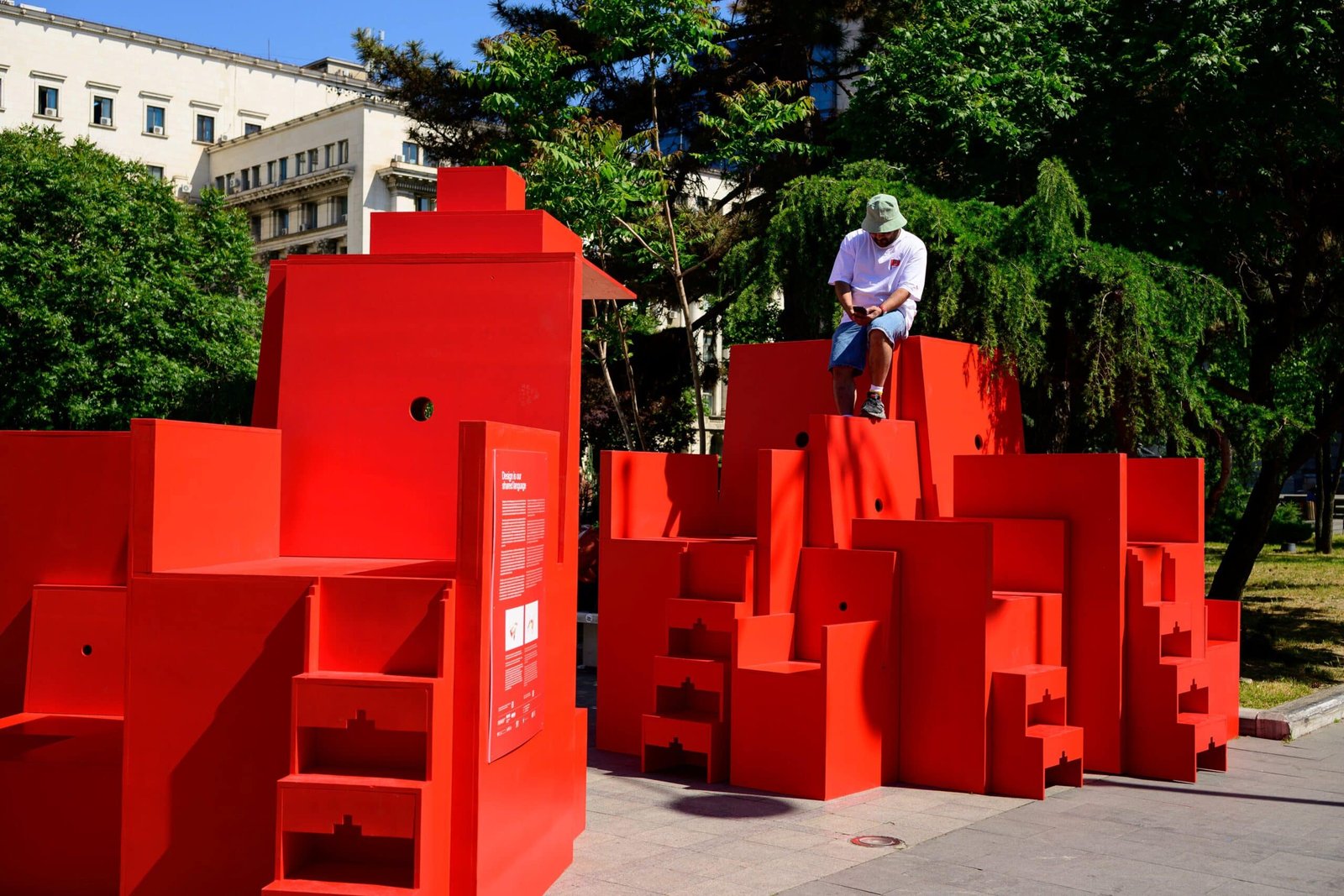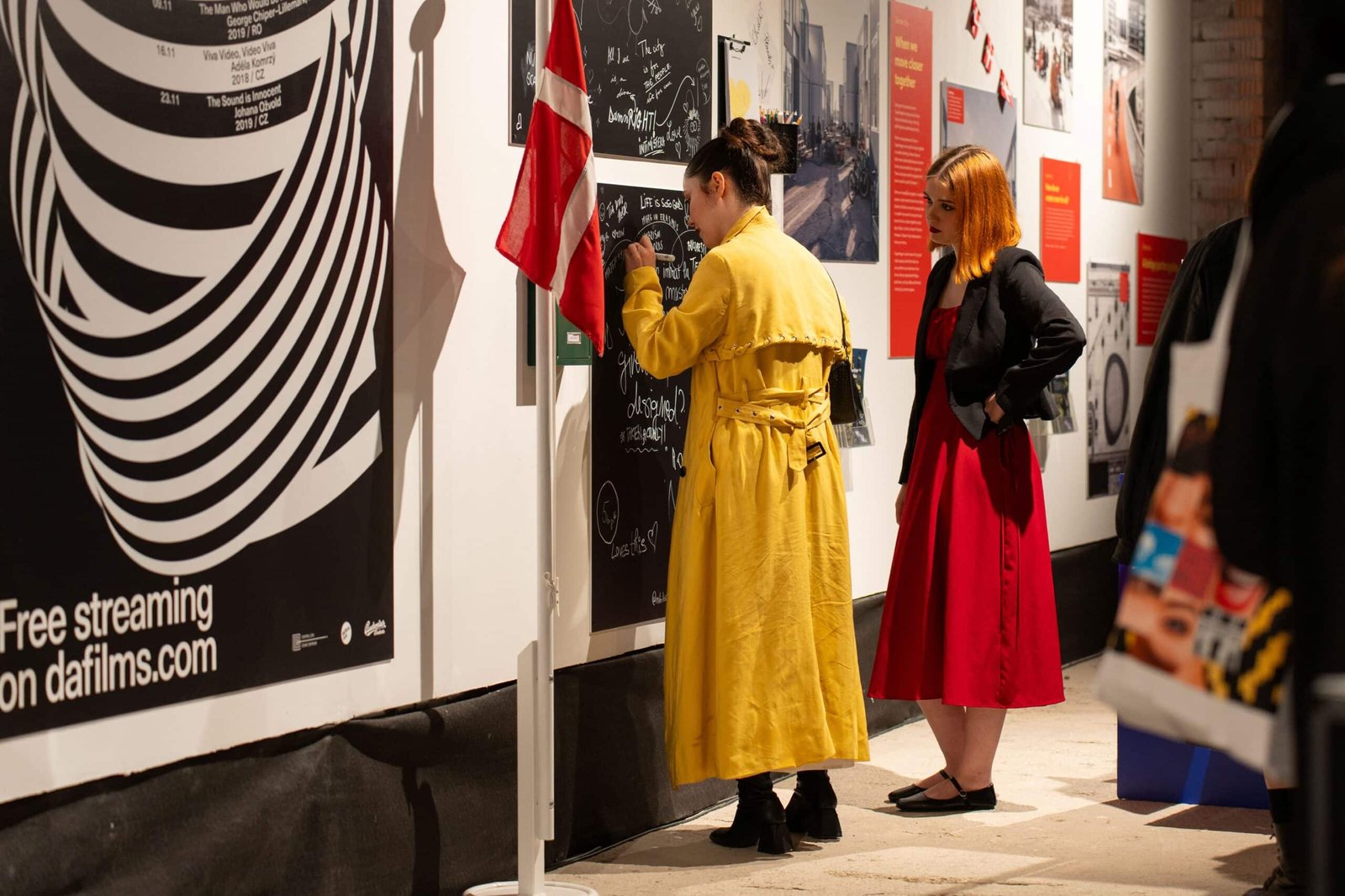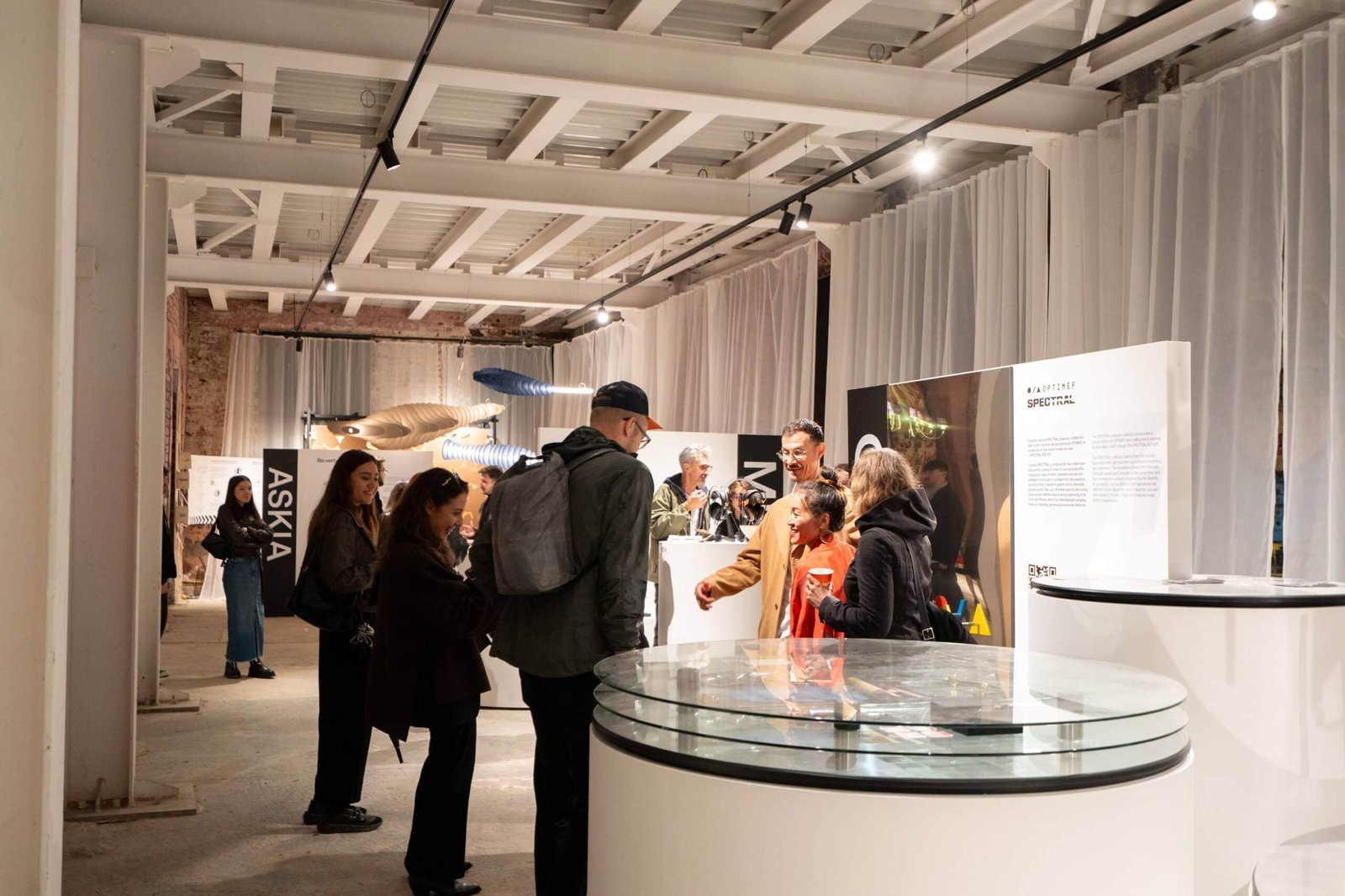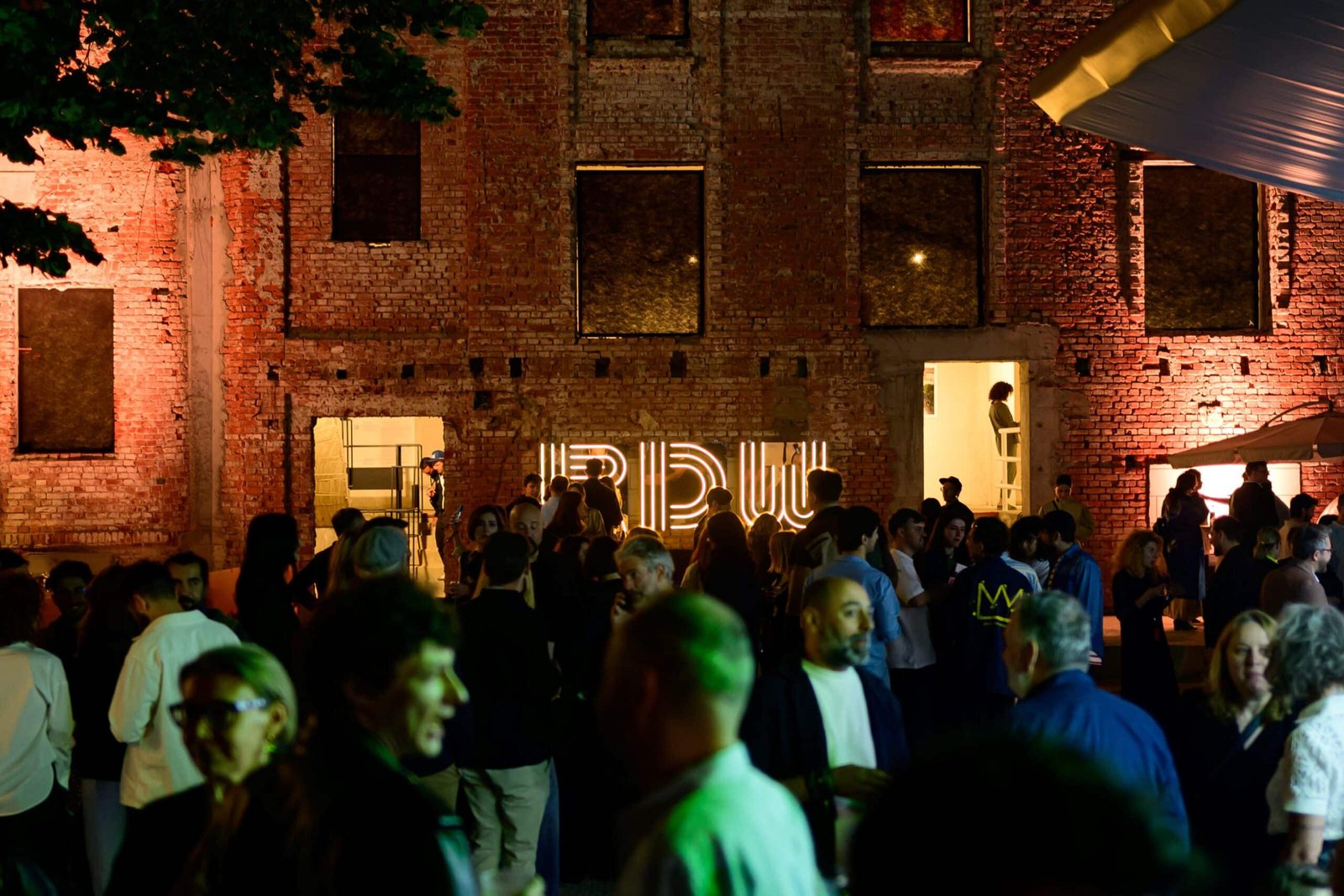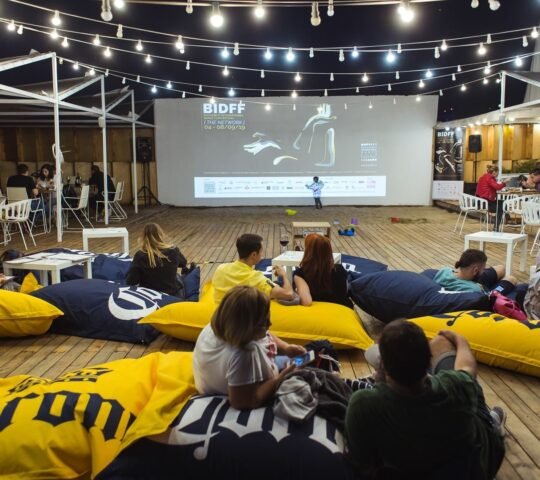Romanian Design Week 2026
Background & History
Romanian Design Week (RDW), Romania’s premier multidisciplinary festival dedicated to the creative industries, was founded in 2013 by The Institute, a non-governmental organization committed to fostering cultural and creative development in the country. Emerging in the post-2008 economic recovery era, RDW addressed the need for a platform to showcase Romanian design’s potential amid a burgeoning creative sector influenced by EU integration and global trends. The inaugural edition in May 2013, held across various Bucharest venues, featured around 50 projects, drawing 5,000 visitors and marking a pivotal moment for local designers to gain visibility beyond niche circles.
Organized annually by The Institute, RDW evolved from a modest showcase into a cornerstone event, reflecting Romania’s transition from communist-era constraints to a vibrant creative economy. By 2015, it expanded to include international collaborations, such as partnerships with the British Council, introducing themes like sustainability and urban innovation. The 2019 edition, pre-pandemic, peaked at 150+ projects and 40,000 attendees, solidifying its role in promoting architecture, graphic design, product design, and more as drivers of social and economic growth.
The COVID-19 pandemic tested RDW’s resilience: the 2020 edition went hybrid, blending virtual tours with pop-up events, while 2021 emphasized digital innovation amid lockdowns. Post-2022 recovery saw record attendance, with the 10th anniversary in 2022 (#FORWARD theme) transforming historic sites like Știrbei Palace into design hubs, celebrating 1,400+ projects over a decade and 150,000 cumulative visitors. By 2024, under “Encounters,” it highlighted interdisciplinary dialogues, curating 200 projects with global curators like Yuko Shimizu and James Goggin.
Enjoy Your Event Stress-Free with Euro Travelo
Planning a trip to attend a festival, concert, or business event in Europe can be overwhelming—tickets, travel, accommodation, and local logistics all take time and effort. Euro Travelo makes it simple by providing everything you need through one trusted company. You save time, avoid stress, and enjoy a seamless experience from start to finish.
Why Choose Euro Travelo:
- Secure and easy ticket booking for concerts, festivals, theaters, and business events.
- Complete travel planning including flights, trains, and local transportation.
- Accommodation arrangements near event venues, tailored to your needs.
- Convenient local transfers, from airport pickups to private shuttles.
- On-site concierge support to help you navigate venues and schedules.
- Custom itineraries and experience packages combining multiple events, tours, and activities.
- Secure payment process, making it safe and convenient to book all services online.
- Flexibility: even if you need only one service, we can assist individually.
RDW’s cultural significance lies in democratizing design, making it accessible to diverse audiences and bridging local talents with international networks. Funded by the Ministry of Culture and presented by UniCredit Bank, it has influenced policy, inspired scholarships, and boosted the creative GDP, contributing to Bucharest’s status as an emerging design capital. The 2025 edition (#13, “Design Tomorrow Today”) introduced structural shifts toward collaboration and sustainability, with 22 exhibitions and 140+ events, attracting 30,000+ visitors and 2,000 contributors.
For 2026, marking the 14th edition, RDW continues its trajectory, expected to build on 2025’s innovations with enhanced public interventions and digital archives. Its growth—from 5,000 to 40,000+ annual visitors—mirrors Romania’s creative renaissance, fostering inclusivity, eco-conscious practices, and cross-sector partnerships that position design as a tool for societal transformation.
- Origins: Launched in 2013 by The Institute in Bucharest to promote post-crisis creative recovery.
- Early Growth: 2013-2018 editions focused on local showcases, expanding to 150 projects by 2019.
- Pandemic Adaptation: Hybrid formats in 2020-2021 emphasized digital tools and resilience.
- Milestones: 10th anniversary (2022) with 1,400+ projects; 2025’s collaborative theme shift.
- Cultural Impact: Democratizes design, influences policy, boosts creative economy via EU ties.
- Economic Role: Generates visibility for 100+ studios annually; €500K+ indirect impact.
- Modern Evolution: 2026 anticipates deeper sustainability focus, international co-productions.
Event Highlights
Main Activities or Performances
- RDW Exhibitions: Curated showcases of 150+ Romanian and international projects in architecture, interior, graphic, product, and fashion design, featuring immersive installations like “Woven Secrets” by FABER or “Sustainable Bucharest” by OAR București.
- International Collaborations: 12 global exhibitions with partners like British Council and Hungarian Cultural Institute, highlighting innovations in smart cities and eco-materials.
- Workshops and Masterclasses: Hands-on sessions on sustainable prototyping, digital illustration, and urban planning, led by experts like Irene Perez (architecture) or Yuko Shimizu (illustration).
- Talks and Panels: Discussions on themes like “Design for Social Change,” with speakers from Mercedes-Benz Fashion Week and Timisoara Architecture Biennale.
- Young Design Show: Platform for emerging talents under 35, showcasing 50+ student projects from universities like Ion Mincu Architecture.
- Product Launches: Debuts from brands like ASKIA, Meze Audio, and MINDTHEGAP, with interactive demos.
- Guided Tours: Themed walks through exhibitions, including curator-led insights into historic venues.
- Networking Events: Professional mixers at creative hubs, fostering collaborations.
Special Traditions or Features
- Annual Theme Exploration: Each edition adopts a forward-looking theme, like #FORWARD (2022) or “Design Tomorrow Today” (2025), guiding curatorial choices.
- Community Vote Archive: Online platform for public validation of 275+ projects, evolving into a permanent best-practices database since 2024.
- Architecture Studios Night: All-night open doors at Bucharest studios, a staple since 2019 for behind-the-scenes access.
- Collaborative Curation: Post-2025 shift to partner-built exhibitions, emphasizing co-creation with 10+ local organizations.
- Sustainability Pledge: Eco-friendly staging with recycled materials and zero-waste policies, integrated since 2020.
- Anniversary Reflections: Decade markers like 2022’s concept store, with 2026 potentially featuring 15-year retrospectives.
- Public Space Interventions: Temporary installations in plazas, turning urban areas into design labs.
Unique Attractions for Visitors
- RDW & The City: 4+ public space designs transforming downtown Bucharest into interactive galleries, like immersive eco-installations.
- RDW Design GO!: Self-guided satellite circuit across 100+ events in cafes, galleries, and showrooms, rediscovering neighborhoods.
- Pop-Up Markets: Capsule shops with 100+ Romanian designers selling fashion, furniture, and art objects.
- Immersive Installations: Sensor-based experiences like “Echoes of Presence” or VR tours of sustainable architectures.
- Family Workshops: Kid-friendly activities, e.g., stained-glass crafting or upcycling sessions for young creators.
- Culinary-Design Pairings: Food zones with design-themed pop-ups, blending aesthetics and taste.
- Digital App Experiences: AR filters and virtual tours via the RDW app for extended engagement.
- Nighttime Events: Late-night tours and performances syncing design with Bucharest’s nightlife.
Date & Duration
Dates
- Dates: dates to be announced
Venue / Location
Romanian Design Week enlivens Bucharest, Romania’s dynamic capital, blending Ottoman, neoclassical, and communist-era architecture with contemporary creative spaces. The 2026 edition centers on three historic venues: the former CINA restaurant building (a neoclassical gem), Casa Fratelli (modern cultural hub), and the National Museum of Art of Romania (MNAR, Europe’s second-largest art museum). Satellite events span the city via RDW Design GO!, including studios in Old Town (Lipscani), creative districts like Combinatul Fondului Plastic, and public plazas. This setup transforms Bucharest’s eclectic urban fabric into an open-air design laboratory.
- Main Venue: Former CINA Restaurant Building – Central exhibitions and installations.
- Secondary Venue: Casa Fratelli – Fashion and product showcases.
- Museum Venue: National Museum of Art of Romania (MNAR) – International and archival displays.
- Satellite Hubs: Old Town galleries, Amzei Square pop-ups, and public interventions.
- Outdoor Spaces: Piața George Enescu and green areas for immersive art.
- Google Maps Address: Former CINA Restaurant Building, Strada Benjamin Franklin 10, 010151 București, Romania.
Ticket Information
- Sales Methods: Online exclusively via bilete.romaniandesignweek.ro and the RDW app (App Store/Google Play), opening March 2026; no on-site sales for main exhibitions. Packages include multi-day passes, family bundles, or combos with satellite events; UniCredit Mastercard holders get 50% off.
- Admission Type: Paid for core exhibitions (timed slots to manage crowds); free for many satellite events, public interventions, and young designer showcases to promote accessibility.
- Pricing in USD: Based on 2025 rates (1 RON ≈ 0.22 USD; 2026 similar). Minimum ticket pricing: $0 USD (free for pupils, students, pensioners, and select events). Maximum ticket pricing: $13.20 USD (10-day full-access pass).
- General Pricing Details: Single-day exhibition ticket: $4.40–$6.60 USD; 5-day pass: $8.80 USD; student/pensioner: free; group rates (10+) at 20% off.
- Special Seating or VIP Options: VIP add-on (~$6.60 USD) for priority entry, curator tours, and lounge access; accessible seating (wheelchair, audio guides) free; themed bundles for architecture nights.
- Additional Notes: Dynamic pricing for peak days; refunds within 48 hours; app-based QR entry for seamless access.
Contact Information
- Email: hello@romaniandesignweek.com (general inquiries, partnerships); press@romaniandesignweek.com (media); youngdesign@romaniandesignweek.com (emerging talents); rdwdesigngo@theinstitute.ro (satellite events).
- Phone: +40 21 310 00 00 (The Institute main line, English/Romanian); +40 21 314 81 11 (festival support during event).
- Website: https://romaniandesignweek.ro (program, tickets, updates); https://www.theinstitute.ro (Institute ecosystem); https://program.romaniandesignweek.ro (event map).
- Social Media: @romaniandesignweek (Instagram/Facebook for highlights, stories); YouTube.com/RomanianDesignWeek (talks, tours); LinkedIn for professional networking.
- Key Staff: Raluca Mirel (Project Director); Andrei Borțun (CEO, The Institute); curators like Andrei Șerbescu (architecture)—contact via email.
- Press/Volunteers: Press accreditation via press@romaniandesignweek.com (deadlines April 2026, includes VIP perks); volunteers for setup/tours at volunteers@theinstitute.ro (apply Q1 2026, benefits: free access, networking).
- Additional Notes: Response times 24–48 hours; multilingual support (English, Romanian, French); newsletter signup for previews; GDPR-compliant privacy policy.
Cultural Experience
Romanian Design Week immerses visitors in Bucharest’s creative pulse, where Soviet-era blocks meet baroque facades, and design serves as a lens for Romania’s post-communist reinvention. Attendees explore how local ingenuity addresses urban challenges, from sustainable housing in flood-prone areas to graphic narratives of folklore, fostering dialogues on identity and innovation amid the city’s layered history.
Traditions include the annual Community Vote, where public input shapes selections, echoing Romania’s democratic ethos. Exhibitions blend Brâncovenesc motifs with modernist minimalism, while panels unpack design’s role in social equity, often in atmospheric venues like MNAR’s gilded halls.
Music and customs infuse events: live electronica synced to light installations, or folk-inspired patterns in textile workshops, paired with communal sarmale feasts. Evening gatherings in Lipscani’s cobblestone alleys evolve into informal critiques over țuică shots, blending intellectual rigor with Balkan hospitality.
This experience celebrates design’s transformative power, bridging Romania’s rural crafts with urban futurism, inspiring attendees to envision collaborative futures.
- Traditions: Community Vote, themed annual explorations, Architecture Night opens.
- Music and Customs: Folk-modern fusions, communal workshops, networking toasts.
- Cultural Significance: Post-communist innovation, folklore-modern blends, social equity focus.
Food & Drinks
- Traditional Romanian: Sarmale (cabbage rolls with minced meat) at pop-up stalls (~$4.40 USD); mămăligă (polenta) with brânză (~$3.30 USD).
- Street Food Highlights: Covrigi (pretzels) or mici (grilled sausages) from Old Town vendors (~$2.20 USD); vegan options like zacuscă dips.
- Design-Themed Bites: Crafted pastries inspired by exhibitions at festival cafes (~$5.50 USD); upcycled ingredient tastings.
- Local Wines and Spirits: Fetească Neagră reds or țuică plum brandy (~$6.60/glass) at lounges; non-alcoholic vișinată cherry liqueurs.
- International Twists: Fusion tapas from satellite events, e.g., Spanish-Romanian pintxos (~$8.80 USD).
- Sweet Treats: Papanasi (cheese donuts with jam) from patisseries (~$4.40 USD).
- Vegetarian/Vegan Options: Grilled halloumi or eggplant salads (~$6.60 USD); seasonal foraged greens.
- Festival Zones: Food trucks at Combinatul Fondului Plastic with Absolut cocktails (~$11 USD).
- Budget Tips: Markets for fresh burek (~$2.20 USD); BYO picnics in public installations.
- Dining Experiences: Guided tastings pairing wines with design talks (~$13.20 USD).
Getting There
- Nearest Airports: Henri Coandă International (OTP), 17 km north (30-min taxi, ~$13.20 USD); Aurel Vlaicu (BBU), 8 km (15-min drive).
- Train Options: CFR from Cluj (6h, ~$22 USD) or Timișoara (5h) to Gara de Nord; high-speed links to Vienna (12h).
- Bus Services: FlixBus from Budapest (10h, ~$33 USD) or Sofia (8h) to Filaret Station.
- Driving/Parking: A1/E81 from west; underground lots near venues (~$6.60/day USD); car-sharing via Pony (~$0.22/min).
- Local Transport: Metro (M1/M2 lines to Universitate, ~$0.66/ride); STB trams/buses; Bolt/Uber (~$4.40 USD short trips).
- Taxis/Rideshares: Bolt from OTP (~$13.20 USD); festival shuttles from stations.
- Accessibility: Wheelchair-friendly metro stations; audio apps for tours.
- Tips: Use RDW app for real-time routes; avoid peak traffic (7-9 AM); bike shares (~$2.20/hour).
Accommodation Options
- Luxury Hotels: Athénée Palace Hilton—Art Deco icon near venues (~$176–$220/night USD), central Calea Victoriei.
- Boutique Stays: Europa Royale—historic charm in Old Town (~$110–$154/night USD), breakfast included.
- Mid-Range: Ramada Plaza—modern near MNAR (~$88–$132/night USD); Ibis Styles Universitate—budget-friendly (~$66–$99 USD).
- Budget Choices: Little Bucharest Old Town Hostel—dorms (~$22–$33/night USD); Generator Hostel—vibrant (~$33 USD).
- Unique Options: Airbnb lofts in creative districts (~$77–$110/night USD); eco-pods in Herăstrău Park (~$88 USD).
- Family/Group: Apartments via Booking.com in Dorobanți (~$110–$165/night USD); hotels with suites.
- Festival Partners: Discounts at Hilton and Ramada for ticket holders; book 4-6 months ahead.
- Tips: Old Town for walkability; outskirts for value with metro; check for design-themed stays.
Maps
Contact
Video
FAQ's
What are the projected dates for RDW 2026, and how does the schedule typically unfold?
Based on the annual mid-May pattern (e.g., May 16–25, 2025), RDW 2026 is expected May 15–24, with core exhibitions mid-week and satellites bookending. The 10-day format allows flexible pacing; confirm via romaniandesignweek.ro in early 2026—plan for 150+ projects and city-wide events.
How can emerging designers participate in RDW 2026 exhibitions or Young Design?
Submit via open calls (Q4 2025) on the website for categories like product or graphic design; Young Design (for under-35s) prioritizes students—free entry, with curators selecting 50+ from 275+ votes. Past launches include ASKIA; mentorship from British Council available.
What accessibility and family features does RDW offer?
Venues like MNAR are wheelchair-accessible with ramps/audio guides; free entry for kids/students. Family perks: Little Explorers workshops (e.g., Ion Olteanu school visits), quiet zones, and pop-up activities; contact hello@romaniandesignweek.com for tailored support, aligning with inclusive urban interventions.
If I miss full tickets, what free or alternative access options exist?
Core exhibitions require tickets (~$4.40 USD), but 140+ RDW Design GO! satellites (cafes, galleries) are free. Public installations via RDW & The City and Community Vote online archive ensure broad access; UniCredit discounts (50% off) for passes—singles available on-site if capacity allows.
How does RDW promote sustainability and collaboration in 2026?
Building on 2025's "Design Tomorrow Today," expect eco-materials in exhibitions, zero-waste policies, and co-productions with 10+ organizations like OAR București. It fosters €500K+ economic impact via networks; volunteer for green roles—past editions featured "Sustainable Bucharest" with Rompetrol support.


